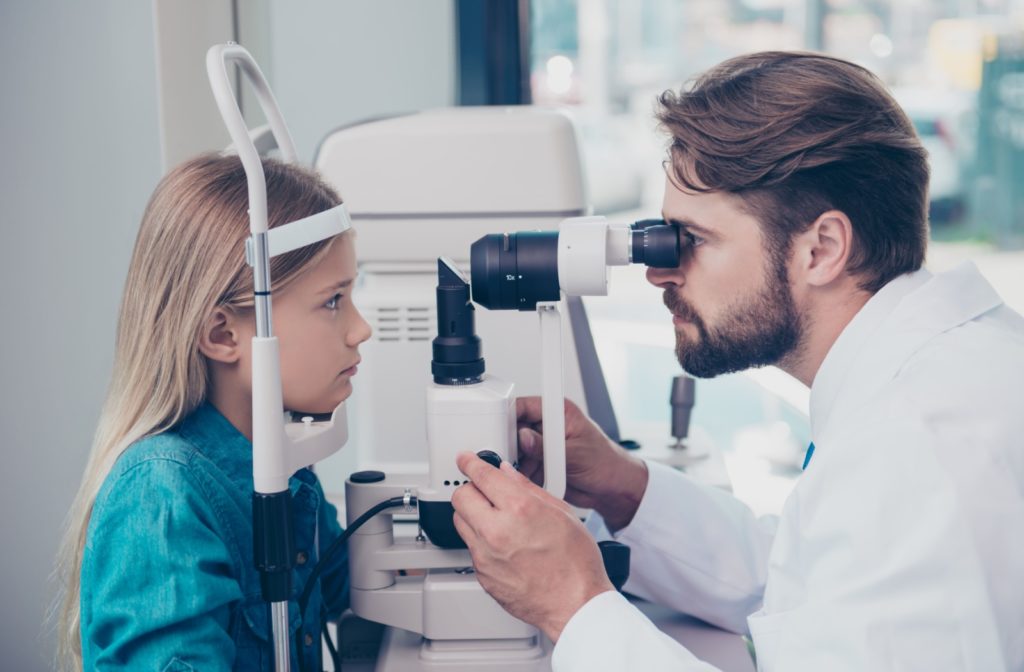Nearsightedness, also known as myopia, and farsightedness, also known as hyperopia, are two common types of refractive errors that can affect one’s vision. These conditions occur when the shape of the eye or the length of the eyeball causes light to focus incorrectly on the retina, resulting in blurry vision.
Anisometropia is a condition where you have one nearsighted eye and the other eye that is farsighted. Anisometropia occurs when there is a significant difference in refractive error between the two eyes. This can lead to difficulty with depth perception, visual fatigue, and eyestrain.
Understanding Anisometropia
Anisometropia can occur in varying degrees, with some individuals experiencing a minor difference in refractive error between their two eyes and others having a significant difference. This condition can also develop at any age, but it is more commonly seen in children whose eyes are still developing.
Some common signs and symptoms of anisometropia include:
- Blurred vision in one eye
- Difficulty with depth perception
- Headaches or eye strain
- Eye discomfort or fatigue when trying to focus on objects at different distances
In some cases, anisometropia can also lead to amblyopia (lazy eye), which is a condition where the brain favors the stronger eye over the weaker one, causing vision in the weaker eye to deteriorate further.
Causes of Anisometropia
Anisometropia can have various causes, including:
- Genetics: A family history of anisometropia or other refractive errors can increase the likelihood of developing this condition.
- Differences in eye growth: The length and shape of the eyeball can vary between individuals, leading to differences in how light is focused on the retina.
- Eye injury or surgery: Trauma to one eye or past eye surgeries can cause changes in the shape of the eye, resulting in anisometropia.
- Cataracts: In rare cases, a cataract (clouding of the eye’s lens) can cause a significant difference in refractive error between the two eyes.
Treating Anisometropia
The treatment for anisometropia will depend on the severity of the condition and the individual’s age. In some cases, no treatment may be necessary if the difference in refractive error is minor and does not cause any significant symptoms. However, for those with more severe anisometropia or symptoms that impact daily life, treatment options may include:
- Glasses or contact lenses: These can help correct the difference in refractive error and improve vision.
- Vision therapy: This involves specialized exercises and activities to help strengthen the weaker eye and improve binocular vision.
- Refractive surgery: For adults with stable anisometropia, LASIK or other refractive surgeries may be an option to correct the difference in prescription between the two eyes.
It is essential to seek treatment for anisometropia as it can lead to various vision problems and complications if left untreated. These may include:
- Amblyopia (lazy eye): If one eye has significantly poorer vision, the brain may suppress its input, leading to amblyopia.
- Strabismus (eye misalignment): An untreated difference in refractive error between the two eyes can cause one eye to turn in or out, leading to strabismus.
- Diplopia (double vision): When the difference in prescription between the two eyes is extensive, it can result in double vision.
- Headaches and eyestrain: Trying to compensate for the difference in refractive error can put a strain on the eyes and may lead to frequent headaches and eyestrain.
The Importance of Regular Eye Exams
One of the best ways to prevent or catch anisometropia early on is by scheduling regular eye exams. During these exams, your eye doctor will perform various tests to assess your visual acuity and overall eye health. They can also detect any significant differences in refractive error between your two eyes and provide appropriate treatment if necessary.
Regular eye exams are especially crucial for children, as their eyes are still developing and can quickly adapt to changes in vision. The American Optometric Association recommends that children have their first comprehensive eye exam at 6 months of age, followed by exams at 3 years old and before starting kindergarten. Afterward, they should have an eye exam every year or 2, depending on their visual acuity and any potential risk factors for eye problems.
For adults, it is generally recommended to have an eye exam every 2 years, depending on age and overall eye health. However, if you notice any changes in your vision or experience symptoms like headaches, double vision, or eye strain, it is essential to schedule an appointment with your eye doctor as soon as possible.
Regular eye exams not only help detect and manage anisometropia but also screen for other common eye conditions like cataracts, glaucoma, and age-related macular degeneration. They can also provide early warning signs of underlying health issues like high blood pressure or diabetes, as the eyes often reflect changes in overall health.

See the World More Clearly: Comprehensive Eye Exams at Total Vision
Anisometropia is a common refractive error that can cause significant vision problems if left untreated. However, with proper and prompt diagnosis and treatment, individuals with this condition can enjoy clear and comfortable vision. Be sure to schedule regular eye exams for yourself and your children to maintain good eye health and catch any potential issues early on.
At Total Vision Golden Hills in San Jose, we offer comprehensive eye exams for people of all ages. Our team of experienced and knowledgeable optometrists can diagnose and treat anisometropia and other eye problems with the latest technology and techniques.
Don’t wait until it’s too late – schedule your eye exam today for a brighter, clearer tomorrow.



